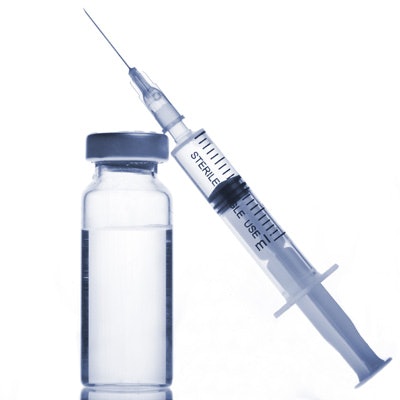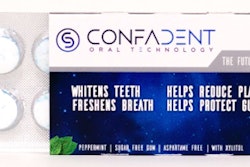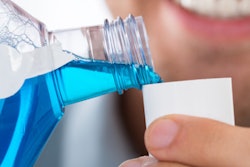
Researchers from the University of Pennsylvania have created a topical solution that halts caries development. The solution, which is still a prototype, could one day make biopharmaceutical therapies part of oral healthcare both inside and outside of the dental office.
The researchers realized that current biopharmaceutical therapies are often both expensive and inconvenient for dentistry. As a result, there is an opportunity to create an inexpensive biopharmaceutical that targets oral diseases.
"Current topical antimicrobial modalities for controlling cariogenic biofilms are limited," wrote co-lead authors Yuan Liu, DDS, PhD, and Aditya Kamesh, researchers at the Penn School of Dental Medicine, in a study in Biomaterials (October 2016, Vol. 105, pp. 156-166). "Apart from treating oral biofilm, protein therapy is minimally utilized in dental medicine because of invasive surgical delivery."
How a solution kills caries
Biopharmaceuticals, also known as protein drugs, are derived from biological sources and can be effective at combating a number of diseases. For example, insulin helps manage diabetes, and hepatitis B surface antigens are used for the hepatitis B vaccine.
“Protein drugs fused with protegrin expressed in plant cells have the potential to be orally delivered to gum tissues in a noninvasive manner and increase patient compliance.”
However, protein drugs are rarely used in dentistry, because they are both expensive and inconvenient, as well as require cold transportation and a sterile delivery method. Therefore, Dr. Liu, Kamesh, and colleagues wanted to see if they could make a cheaper topical biopharmaceutical that effectively combated new and existing oral biofilms.
The researchers began by using a low-cost method to produce protegrin-1 (PG1), an antimicrobial protein drug, within plant cells. They harvested leaves that contained the protein drug and then freeze-dried them for long-term storage, protein extraction, and purification.
In the meantime, the researchers grew Streptococcus mutans, S. gordonii, and Actinomyces naeslundii on saliva-coated disks that mimicked the composition of dental enamel. S. mutans is a major caries-causing agent, while S. gordonii is associated with early caries development, and A. naeslundii is associated with root caries.
Following oral bacteria growth, the researchers applied one of the following solutions to each of the disks:
- Protegrin-1
- Protegrin-1 fused with dextranase and mutanase, enzymes that degrade sugar polymers
- A buffer as a negative control
- Chlorhexidine, a current form of antimicrobial treatment for dental diseases, as a positive control
- Chlorhexidine fused with dextranase and mutanase as a positive control
The researchers analyzed how effective each solution was at combating developing and existing caries. They found that, even at low concentrations, the protegrin-1 solution was highly potent and began killing S. mutans bacteria within 10 minutes. It was also effective at combating S. gordonii and A. naeslundii.
| Effectiveness of protegrin-1 solution on S. mutans | ||
| Minimal inhibitory concentration | Minimum bactericidal concentration | |
| Protegrin-1 solution (10 µg/mL) | 1.3 - 2.5 µg/mL | 5.0 - 10.0 µg/mL |
"We observed a substantial impairment of biofilm formation by S. mutans. ... The few adherent cell clusters were mostly nonviable compared to control, demonstrating potent effects of GFP-PG1 [protegrin-1 solution] on biofilm initiation, despite topical, short-term exposure," the authors wrote. "In addition, the inhibition of biofilm formation by PG1 was comparable to equivalent concentration of chlorhexidine."
In addition, the protegrin-1 solution fused with dextranase and mutanase enzymes was able to eliminate 60% of the exopolysaccharides (EPS)-rich matrix that surrounded S. mutans bacteria. The EPS matrix is largely composed of sugar residues and protects bacteria from antimicrobials.
"Together, the data demonstrate the potential of this combined approach to significantly enhance antimicrobial efficacy of PG1 against established biofilms," the authors wrote. "Furthermore this approach was effective as chlorhexidine combined with EPS-degrading enzymes."
 Treatment with the plant-made protegrin significantly prevented the buildup of a bacterial biofilm compared with a control. Image courtesy of the University of Pennsylvania.
Treatment with the plant-made protegrin significantly prevented the buildup of a bacterial biofilm compared with a control. Image courtesy of the University of Pennsylvania.Future is bright for dental biopharmaceuticals
While the study offers a promising look at the future of biopharmaceuticals in dentistry, the protegrin delivery method was only a prototype, and the authors noted it will still take time to overcome significant hurdles before their application can be used clinically.
However, the future looks bright for the delivery method, which also held up well when tested in vitro on various oral cavity cells, including periodontal stem cells and head and neck squamous carcinoma cells.
Some of the researchers are currently conducting in vivo studies to test the effectiveness of topical plant-based antimicrobial proteins, like protegrin-1, on teeth and gums. They plan to continue testing their delivery method, such as by possibly lacing chewing gum with the proteins.
"Beyond topical application, protein drugs fused with protegrin expressed in plant cells have the potential to be orally delivered to gum tissues in a noninvasive manner and increase patient compliance," the authors concluded. "The high cost of current protein drugs is due to their production in prohibitively expensive fermenters, purification, cold transportation/storage, short shelf life, and sterile delivery methods. All these challenges could be eliminated using this novel drug delivery concept to prevent biofilm-related infections and enhance oral health."



















